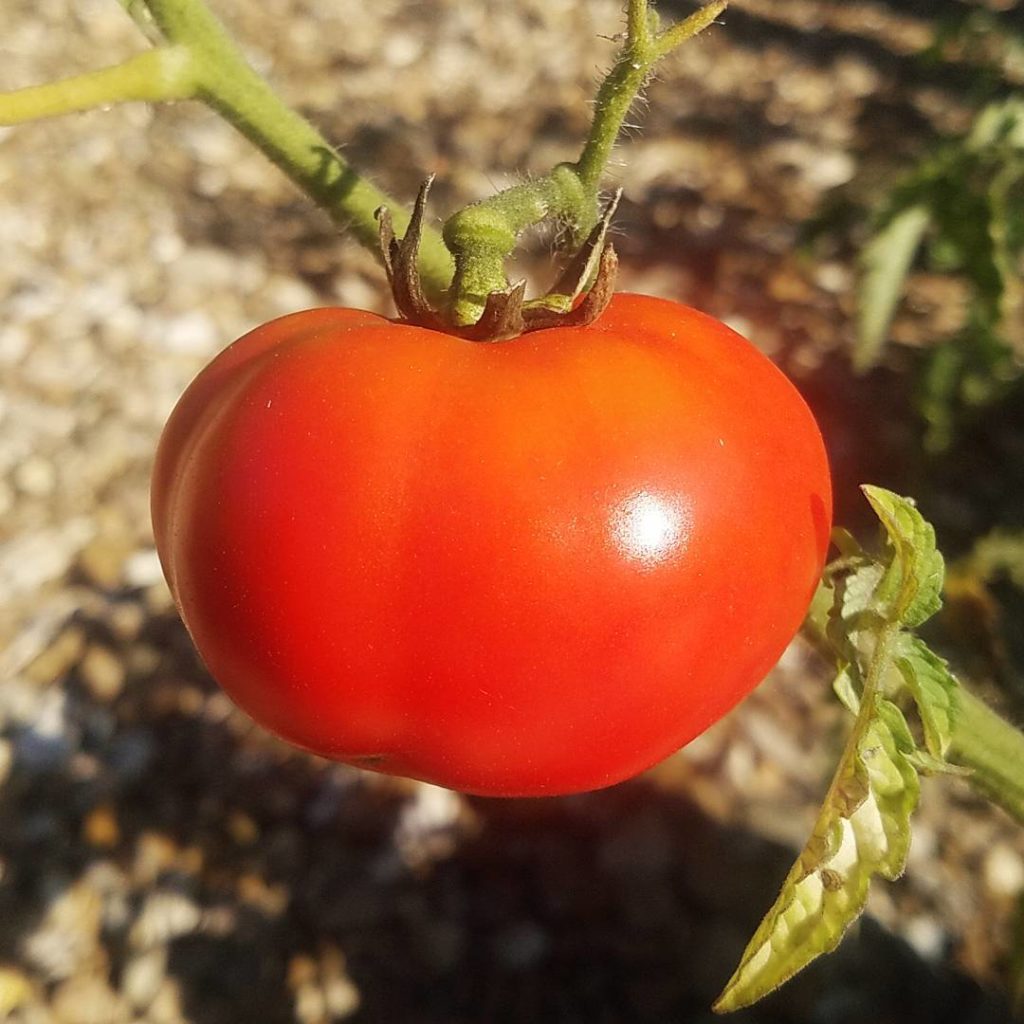Choosing Which Crops to Grow: Begin with the End in Mind
This is one of my favorite times of the garden season: the dreaming phase! It is so exciting! But, it can also be a bit overwhelming — especially when thumbing through endless seed catalogs!
To cut down on the overwhelm, I like to first circle the varieties of seeds that interest me; then I go back and settle on the ones to purchase.
How do we decide, though, which varieties make the cut? For sure, there’s a lot to consider, including how long it takes to mature, if it’s able to be grown in our climates, and is it prone (or resistant) to certain pests or diseases.
This can be a lot to take on, but before we even ask those questions, let’s start with one of the more fundamental considerations: How do I want to USE this vegetable, fruit, herb, or flower?
In our recent episode of The Beginner’s Garden Podcast (and the blog post below), we discuss all of the details that go into choosing your crops. You can listen to that here or continue reading.
Begin with the end in mind for your vegetables
Do you want to eat fresh veggies?
If you aren’t into preserving or canning your harvest and you simply want to walk out to your garden and grab a fresh veggie for lunch or dinner, then there are certain qualities you’ll want to look for in the plant you grow.
For example, if you love the taste of fresh tomatoes, you’ll most likely choose a slicing tomato with a reputation for flavor. These are different than the tomatoes I grow for canning sauces, pastes, and salsas. The same thing goes for fresh cucumbers. You’ll want a slicing cucumber instead of a pickling variety for the best tasting fresh cucumber.
Cucumbers even offer different varieties that help with indigestion issues (look for burpless) and offer types that are less prone to bitterness (which can occur when a plant is stressed from heat and lack of consistent water).
Another consideration you may have is how long will the season last? If you’re wanting to have those fresh tomatoes all season long, you’ll want to choose an indeterminate variety. These fruit for the duration of your season.
Do you want to freeze or can your vegetables?
You’ll find as you look at the details in seed descriptions that some plants tend to be well suited for preserving. Some are excellent freezing candidates, others hold up well to canning. For either, you’ll find “excellent processing variety” in the description.
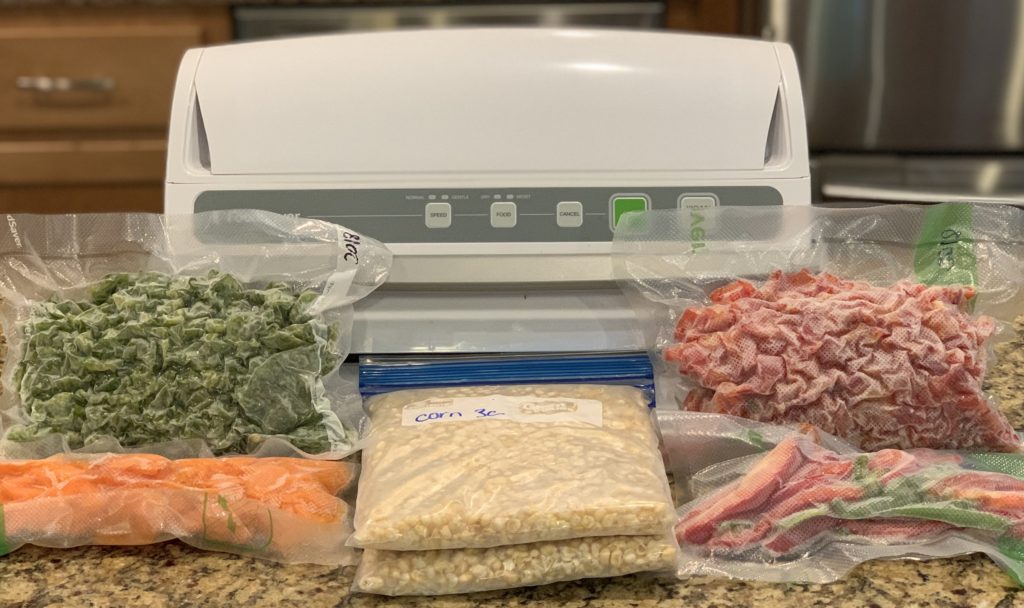
When it comes to tomatoes, which I always preserve through canning, I look for a paste tomato, as they have a thicker flesh and they don’t get as juicy — qualities that make an excellent canned product.
Keep in mind, you can still preserve other varieties like your slicing tomato; there’s just more time involved in the simmering process, and the total product able to be canned will be less due to its high water content.
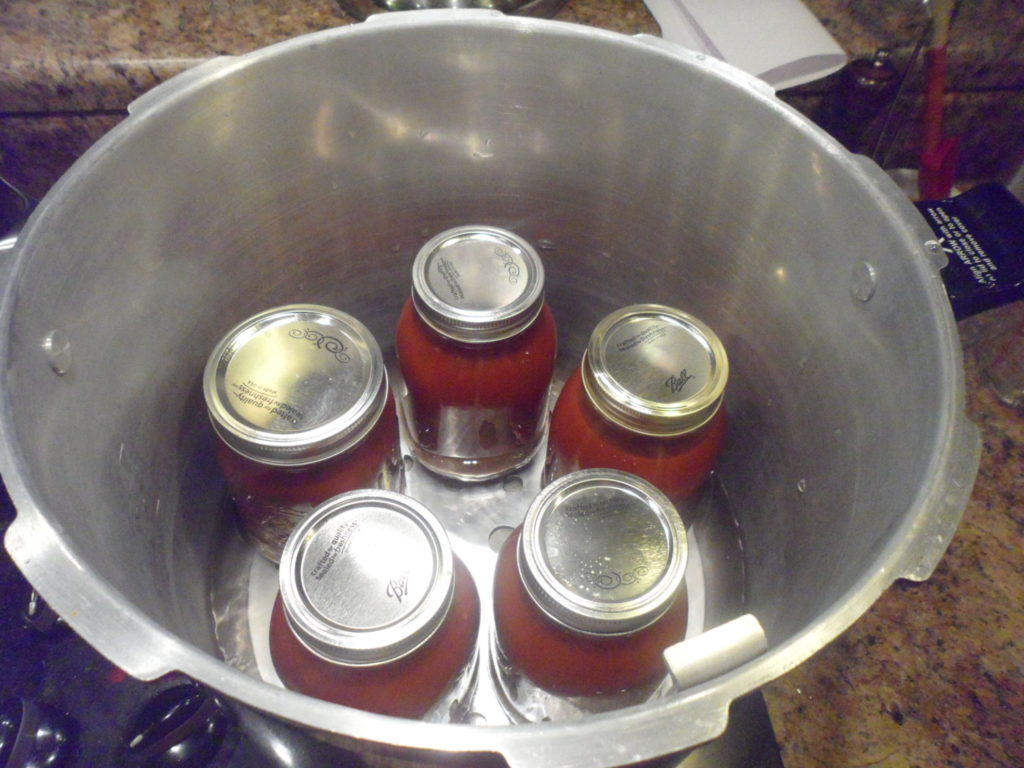
Do you want to pickle or ferment?
When it comes to cucumbers, I plant both pickling and slicing varieties. I enjoy fresh cucumbers straight of the vine, but I also enjoy canning my pickles. While some varieties can work for both, I default to those varieties that are specifically suited for either fresh eating or for pickling.
While fermentation is kind of new on my radar, there are plants best-suited for this process. For example, if you plan to make sauerkraut, you might want to choose a cabbage variety that specifically says it works great for kraut.
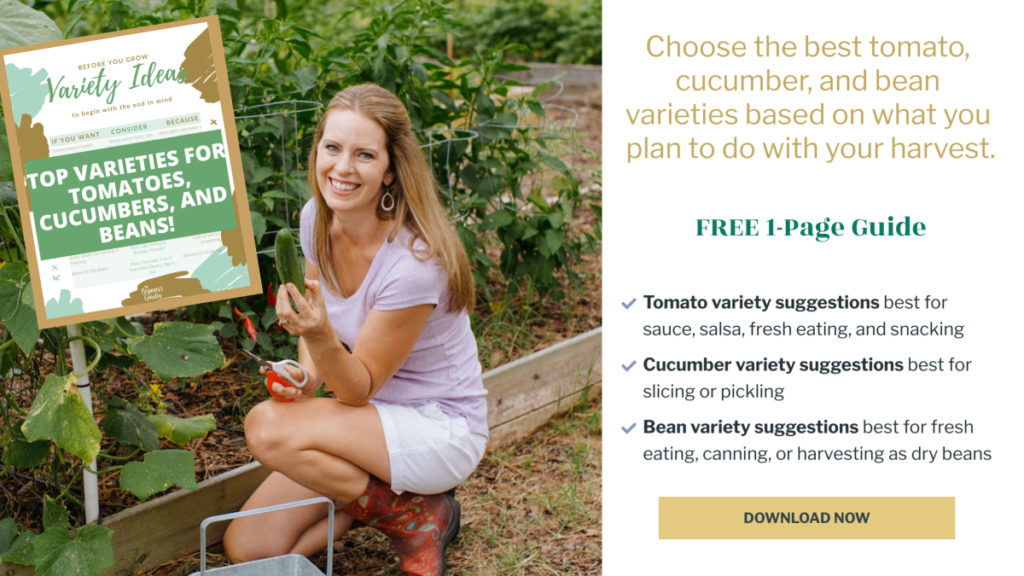
How long do you need your root crops to keep?
In general, root crops can stay fresh for several months properly stored, but you’ll find differences in the shelf-lives of different varieties.
For example, it is important for me to pick an onion variety that will keep for a longer-term. There are some onion varieties that, once you harvest and cure them, they will only last you a month or two. Others can last 3-4 months. I plant both types. We will eat the one variety earlier in the season and then keep our others in storage for a longer-term.
This is something to look at with most root crops. Many carrots, onions, and potatoes all have labels that say “excellent keeper” and so depending on your need, take a look at those labels. Though not root crops, you’ll also find the same indication for winter squash.
Do you want to make your own herbs and spices?
The last thing you may want to consider is what seeds are best for you to make your own herbs and spices. I make my own paprika, cayenne pepper, and ranch seasoning (to name a few). So, I look for peppers and herbs specifically with the drying and seasoning in mind. I plant paprika peppers, cayenne peppers, dill, parsley, and other peppers and herbs, knowing that these plants will eventually be made into spices or spice mixes in my kitchen.
Begin with the end in mind for you fruit
Will you be eating your fruit fresh or preserving it?
While we all love fruit, we don’t talk about it as much when we plan our gardens. But knowing how you want to eat and use your fruit will inform what varieties you choose.
Let’s first talk about strawberries. There are two main types: June-bearing and Ever-bearing. My June-bearing strawberries typically harvest for a 2-3 week period in May. These berries are really large and are your best bet when it comes to preserving because they are ready at the same time.
A lot of people like Ever-bearing because they have one main harvest and then a slow trickle of berries throughout the season. Ever-bearing strawberries are also usually smaller.
Personally, I tend to get so busy with other harvests in late summer that I forget about them, so I prefer a June-Bearing. But again, beginning with the end in mind will help you decide which type will best suit you.

This same thing is true of my other berries. I’ve got some blackberry bushes that come on at once and some that have a slow trickle throughout the year. Depending on the variety, some blackberry or raspberry types will fruit once or twice per year.
Do you have space for large fruit?
My favorite thing to eat in the middle of a hot summer is a juicy melon! Honestly, is there anything better? I love watermelons, cantaloupe, honeydew –all the melons! But, a good consideration when it comes to planting these melons is your storage space!
I love a large watermelon, but if you don’t have an extra refrigerator, you may want to plant a smaller variety like Sugar Baby or Crimson Sweet! These produce a few at a time and you can space out your harvest to enjoy smaller, fresh melons for a longer time.
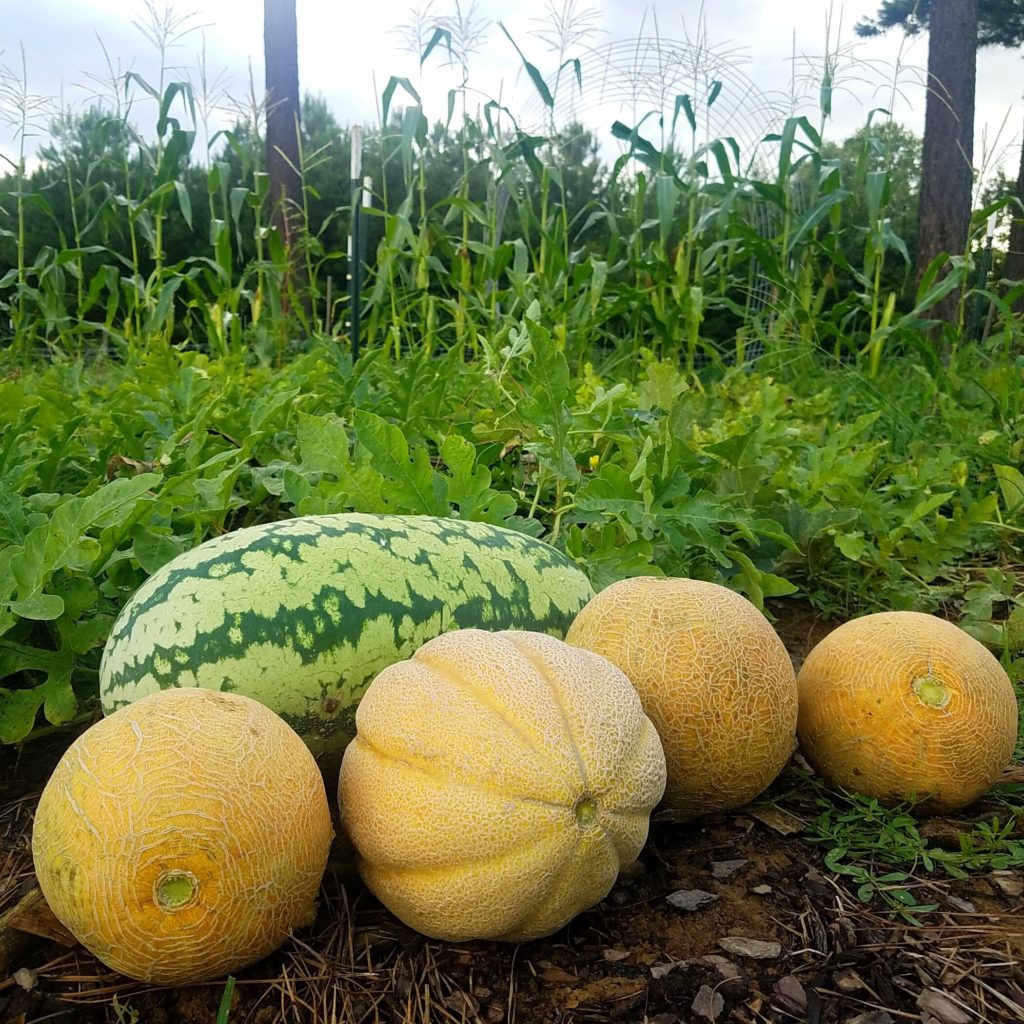
Begin with the end in mind for your flowers
Do you grow flowers for medicinal purposes?
If you plan to grow flowers or herbs for medicinal purposes, you want to choose the varieties most suited for medicinal use.
I grow calendula and echinacea specifically with the end in mind. I dry these petals and use them in infused oils and salves for my facial moisturizer every day. Because I know I’m growing these primarily for their skincare purposes (and not just their beauty in my garden), I choose the kinds that are known to be the best for these purposes.
Are you planting flowers to attract beneficial insects and pollinators?
If you want to plant flowers to attract beneficial insects and pollinators to your garden, I recommend growing native varieties to begin with.
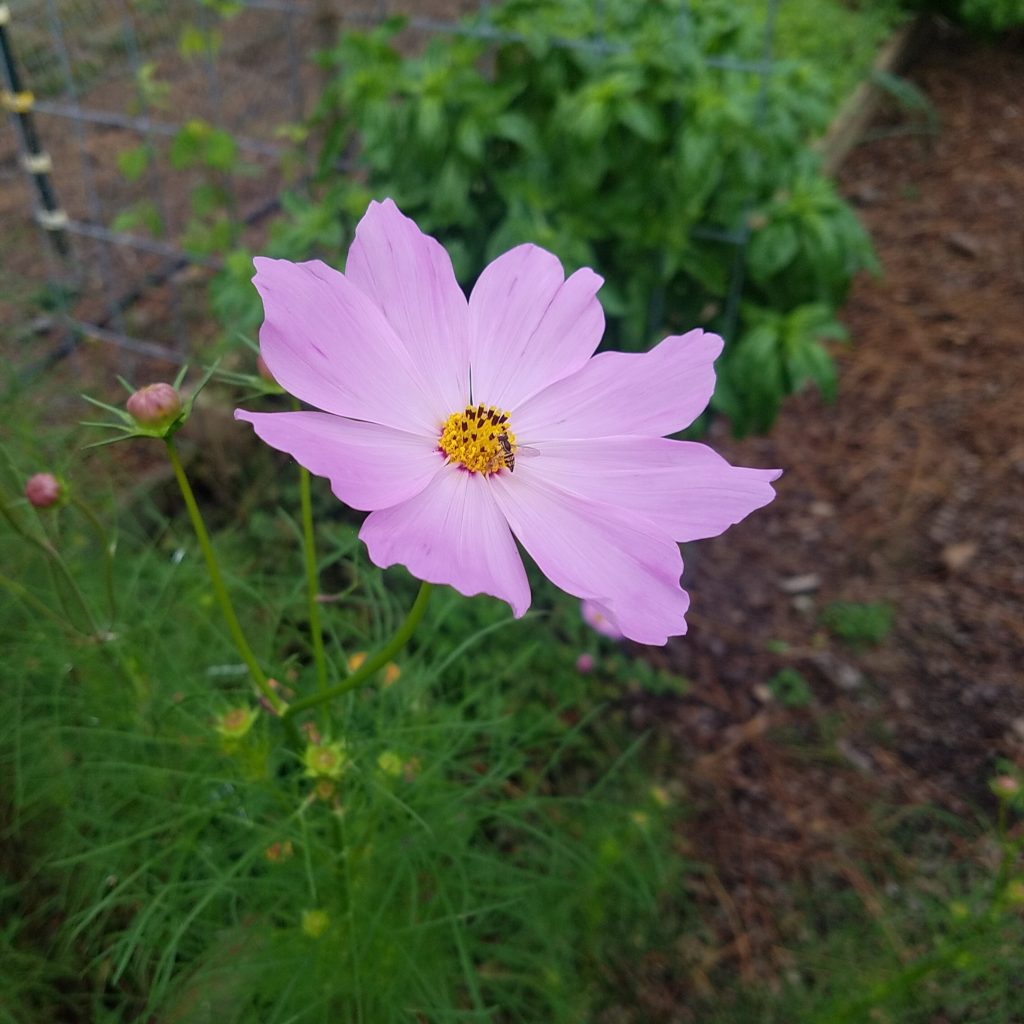
Another thing to consider is your bloom time. If your flowers bloom all at once, you don’t have pollination support during the entire gardening season. Try and look at bloom times as described in seed catalogs (or your local native plant resource) and choose varieties that bloom at different times throughout the season.

—
Choosing plant varieties can definitely be a daunting task! But when you begin with the end in mind, you’re garden will surely be more enjoyable, successful, and will best serve your overall purposes.
Do you get overwhelmed with garden planning?

Subscribe here for my best tips to plan your garden in just 7 days -- all for FREE.
Plus, I'll send you my "In the Garden E-mail" on Fridays, periodic updates on garden resources relevant to you, and you'll receive access to my entire bank of free garden downloads!
You are also agreeing to our privacy policy.

